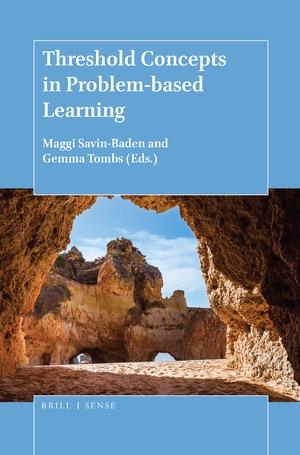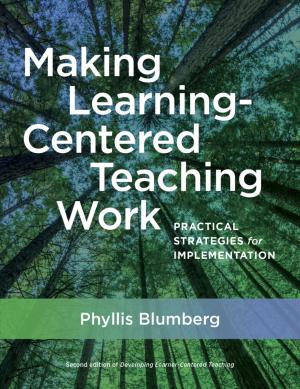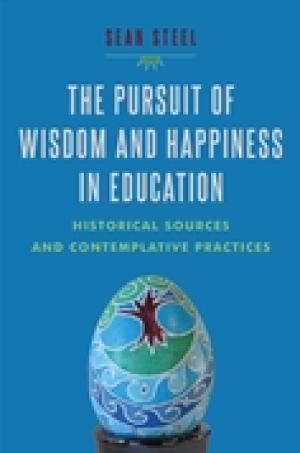Resources by Mary Ann Zimmer

The editors of this volume address a gap in scholarship by bringing Problem-based Learning (PBL) into fruitful dialogue with the separately developed Threshold Concepts Framework (TCF). The goal of the volume is to show how TCF enhances the understanding and practice of PBL. None of the authors addresses the teaching of theology or religion; nonetheless, each chapter offers some insight that could readily lend itself to a better understanding of the process of learning in the theology or religious studies classroom. The collection begins with four strong introductory chapters addressing the basics of these two pedagogical approaches and their relationship to each other. The next three chapters lay out how these theories can be found across such different disciplines as engineering education, chemical engineering design, and professional development for university teachers. The final three chapters report on research projects that point out new TCs in additional disciplines. PBL is an educational practice that presents students with real world problems that are not neatly defined and do not have an obvious solution. Students work in groups to decide what further knowledge they need, how to obtain it, and how to represent it. The TCF works with the points at which students cross in a significant way from familiar ways of framing knowledge to a point of disorientation and then to incorporating new knowledge. Savin-Baden and Tombs describe TCs and PBL as independently developed pedagogies but natural partners nonetheless. This is true in two ways. PBL has long described itself as deliberately constructing a path for students toward and through “troublesome” knowledge. Suitable problems for PBL are those that lead students to a point of being stymied in their existing level of knowledge as they address wicked problems that are not easily classified and solved. Often the PBL method is itself troublesome to students as they wrestle with an educational process that shifts responsibility from teacher to student and from individual to group. Operating separately, TCs identify and work with concepts either particular to a discipline or more generally, that require a student to leave the space of prior knowledge and self-understanding and enter into a liminal state in which prior knowledge is no longer viable but new concepts or self-understandings are not yet grasped or stabilized. TCs give attention to the type and amount of scaffolding that is necessary to prepare students and help to direct them through these impasses. Although the TCF was originally developed through consideration of threshold concepts in particular disciplines, the editors go beyond those boundaries to consider transdisciplinary concepts including critical thinking. Even though the chapters devoted to particular disciplines are not all obviously applicable to teaching theology and religion, their authors succeed in making the target ideas more understandable. The chapter most valuable for teachers of theology and religion is the contribution of Jayne Lewis, “Empathy and Problem-based Learning.” People unfamiliar with these two areas will find enough guidance to read the discussion fruitfully; that being said, this collection is not an entry-level introduction but an opportunity for deeper development for those already familiar with one or both of these approaches. There are more proofreading issues in this book than one would expect. Skipped words and puzzling phrases slow readers down while they grapple with making sense of the text.

This is a substantially expanded and enhanced revision of Phyllis Blumberg’s acclaimed and bestselling book, Developing Learner-Centered Teaching: A Practical Guide for Faculty (Jossey-Bass, 2009). This easy to follow how-to-guide provides faculty with both a thorough introduction to this evidence-based approach to teaching and practical guidance on how to progressively implement it to strengthen the impact of their teaching. It demonstrates how they can integrate learning-centered teaching into their classroom practice without sacrificing content and rigor, and how to positively engage students in the process by demonstrating its impact on their mastery and recall of key concepts and knowledge. An added outcome, given that learning-centered teaching is correlated with improved student learning, is the resulting assessment data that it provides faculty with the measures to meet the increased demands by accreditors, legislators and society for evidence of improved teaching and learning outcomes. Phyllis Blumberg demonstrates how to use rubrics to not only satisfy outside requirements and accreditation self-studies but, more importantly, for faculty to use for the purposes of self-improvement or their teaching portfolios. She provides examples of how the rubrics can be used to ascertain whether college-wide strategic plans for teaching excellence are being met, for program review, and to determine the effectiveness of faculty development efforts. The book includes the following features: - Boxes with easy-to-implement and adaptable examples, covering applications across disciplines and course types - Worksheets that foster easy implementation of concepts Rubrics for self- assessment and peer assessment of learning-centered teaching - Detailed directions on how to use the rubrics as a teaching assessment tool for individuals, courses, and programs - List of examples of use classified by discipline and type of course Phyllis Blumberg offers Making Learning Centered Teaching Course Design Institutes and workshops on this and other teaching and assessment topics. Half day to multiple day modules. (From the Publisher)

Steel includes in this work both recommendations and critiques that follow from his conviction that educators can and should take up the study of philosophy in their classrooms, which in this discussion is K-12. Using a foundation of classical Greek philosophy, the author takes up five themes in the book: (1) a survey of current ideas about how the pursuit of wisdom is or is not part of education; (2) a retrieval of ancient and medieval ideas of wisdom and the search for wisdom; (3) a critical examination of educational trends and practices and the barriers they create to the pursuit of wisdom; (4) use of ancient and medieval thought to assess current educational movements that aspire to promote wisdom; (5) a survey of movements understood as contemplative pedagogies and some cautions about their limitations. Finally, he indicates his own proposal for this project. Steel critiques current educational practice along lines that many readers will find familiar: emphasis on assessment, stress on global competition, and pursuit of technological expertise without concern for ultimate ends. All of these, he argues, have not only been mistaken for the ideal goals of education, they militate against the real goal – the pursuit of wisdom. Steel prescribes these as essential for the attainment of wisdom: schole (leisure) leading to theoria (seeing) the ultimate good through the experience of metaxy (an experience of tension as one reaches from ignorance toward the Supreme Good, ultimate truth, or being as such). Taking from Plato the movement of ascent and descent as essential to reaching toward wisdom, he emphasizes the necessity of “dying to self and all that is not wisdom” (4). Steel is thorough in explaining his viewpoint in relationship to a host of educational greats: Augustine, Aquinas, Maimonides, Pieper, and Bloom, to name but a few. The author states clearly that the pursuit of wisdom in a classroom today is likely to create serious negative pushback from the whole educational establishment. He believes this because he is convinced that only awareness of one’s ignorance makes wisdom possible. Such an experience of ignorance, he argues, is sure to be deeply uncomfortable and even intolerable for today’s students who are trained to attain the “right” answer above all. Such a practice is also contrary, he finds, to the mandate given teachers to produce students who can pass the required assessments. For the most part Steel leaves it to the reader to navigate a second potential problem, the fact that an educational institution may not necessarily agree that assisting students to reach toward the Supreme Good (or some other ultimate) is part of their educational mandate – or is even permissible. Steel acknowledges that philosophical programs and contemplative pedagogical movements that aspire to facilitate student encounters with wisdom are present. Many of these, he argues, do not reach their essential goal because they are used as a means to some end other than wisdom: health, relaxation, or happiness, for example. According to Steel, “contemplative activity is not a tool for happiness; it is happiness, for it is the highest activity of the best part of the soul in relation to its most sublime object in the Supreme Good” (259). His own programmatic proposal is extremely brief as a proportion of this substantial book and chiefly cites his own experience in teaching Greek philosophy to high school students and using more modern texts such as Walden to encourage a contemplative experience of the world. This volume will be appreciated by those interested in the intensive application of classic Greek philosophy to current educational practice and to a critique of current contemplative pedagogical movements.